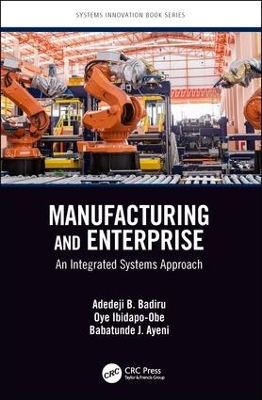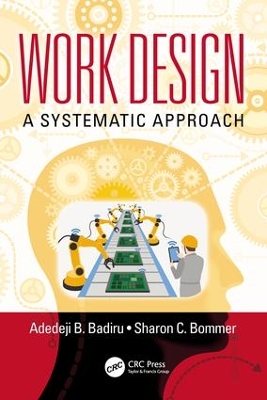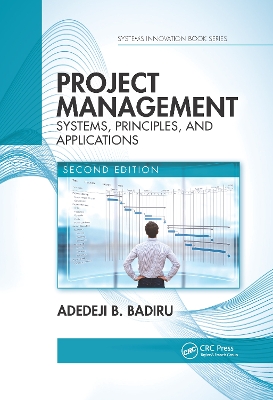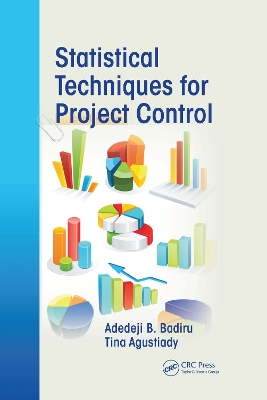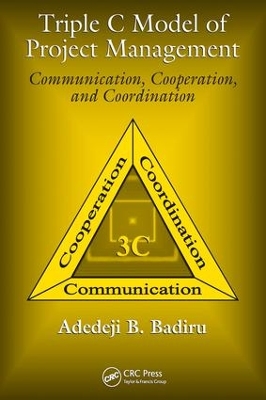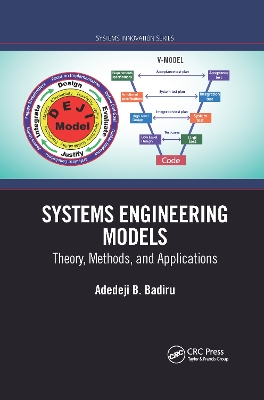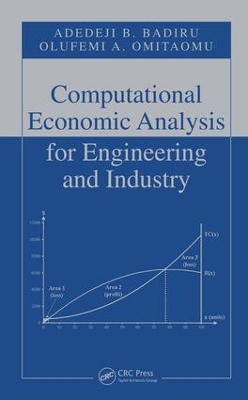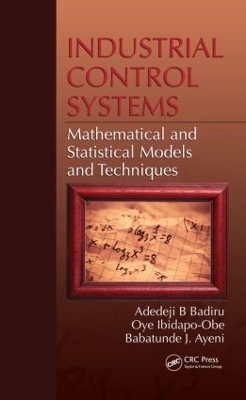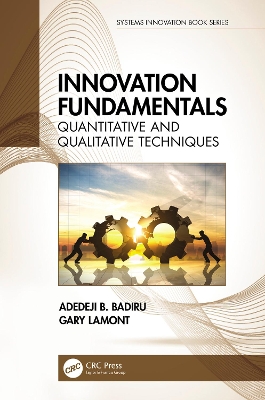Systems Innovation Book
16 total works
Manufacturing and Enterprise
by Adedeji B. Badiru, Oye Ibidapo-Obe, and Babatunde J. Ayeni
This book presents an integrated systems approach to manufacturing and business enterprise. Traditionally, these topics are treated as separate and independent subjects, but the practical fact is that the manufacturing and the business enterprises are intertwined. Currently, there is no book on the market that addresses both subjects from an integrated systems engineering approach with a manufacturing engineering foundation. Topics covered include engineering process, systems modeling, business enterprise, forecasting, inventory management, product design, and project management.
Features
- Provides in-depth treatment of modern manufacturing processes, systems, and tools
- Uses an integrated systems life-cycle approach to manufacturing and business
- Includes business proposals
- Discusses prototype manufacturing and/or business development processes
- Presents concepts, steps, and procedures for achieving an integrated enterprise of manufacturing and business
Work is all around us and permeates everything we do and everyday activities. Not all work is justified, not all work is properly designed, or evaluated accurately, or integrated. A systems model will make work more achievable through better management. Work is defined as a process of performing a defined task or activity, such as research, development, operations, maintenance, repair, assembly, production, and so on. Very little is written on how to design, evaluate, justify, and integrate work. Using a comprehensive systems approach, this book facilitates a better understanding of work for the purpose of making it more effective and rewarding.
The goal of the new edition is to continue with a systems view of the world. For a more robust and worldwide market dissemination, the new edition has changed to a reference book. The project systems approach to project management, is needed in executing projects across countries and across cultures, which is a crucial requirement in today's globalized and intertwined economics. The book uses ample graphical representations to clarify the concepts and techniques presented. The case examples help to reinforce the topics covered. Several illustrative examples and practice exercises are included. Each chapter is updated and new chapters include Project Simulation and Project Templates. A new chapter on managing complex projects in an age of artificial intelligence adds a unique value to the book.
Features
- Highlights contemporary best practices of project management
- Uses a systems framework to integrate quantitative and qualitative tools
- Offers illustrative examples and practice exercises
- Covers project schedule performance appraisal techniques
- Discusses the knowledge areas contained in the Project Management Book of Knowledge (PMBOK)
- Presents software applications for project management, as well as case examples
Statistical Techniques for Project Control
by Adedeji B. Badiru and Tina Agustiady
Winner of the IIE Book of the Month for June 2012
A project can be simple or complex. In each case, proven project management processes must be followed. In all cases of project management implementation, control must be exercised in order to assure that project objectives are achieved. Statistical Techniques for Project Control seamlessly integrates qualitative and quantitative tools and techniques for project control. It fills the void that exists in the application of statistical techniques to project control.
The book begins by defining the fundamentals of project management then explores how to temper quantitative analysis with qualitative human judgment that makes project control nebulous but also offers opportunities to innovate and be creative in achieving control. The authors then discuss the three factors (time, budget, and performance) that form the basis of the operating characteristics of a project that also help determine the basis for project control. They then focus on computational network techniques for project schedule (time) control.
Although designed as a practical guide for project management professionals, the book also appeals to students, researchers, and instructors.
Project Management for Research
by Adedeji B. Badiru, Christina F Rusnock, and Vhance V. Valencia
Graduate research is a complicated process, which many undergraduate students aspire to undertake. The complexity of the process can lead to failures for even the most brilliant students. Success at the graduate research level requires not only a high level of intellectual ability but also a high level of project management skills. Unfortunately, many graduate students have trouble planning and implementing their research.
Project Management for Research: A Guide for Graduate Students reflects the needs of today’s graduate students. All graduate students need mentoring and management guidance that has little to do with their actual classroom performance. Graduate students do a better job with their research programs if a self-paced guide is available to them. This book provides such a guide. It covers topics ranging from how to select an appropriate research problem to how to schedule and execute research tasks. The authors take a project management approach to planning and implementing graduate research in any discipline. They use a conversational tone to address the individual graduate student.
This book helps graduate students and advisors answer most of the basic questions of conducting and presenting graduate research, thereby alleviating frustration on the part of both student and advisor. It presents specific guidelines and examples throughout the text along with more detailed examples in reader-friendly appendices at the end. By being more organized and prepared to handle basic research management functions, graduate students, along with their advisors, will have more time for actual intellectual mentoring and knowledge transfer, resulting in a more rewarding research experience.
Project Management for the Oil and Gas Industry
by Adedeji B. Badiru and Samuel O Osisanya
Although most agree that Lean Six Sigma is here to stay, they also agree that learning how to sustain the results seems problematic at best and unattainable at worst. Reverting to the old way of doing things is inevitable if sustainability measures are not a part of the methodology. Currently there are no standard resource on how to be sustainable or on using statistical techniques and practices. Until now. Sustainability: Utilizing Lean Six Sigma Techniques not only examines how to use particular lean six sigma tools, but how to sustain results that make companies profitable with continuous improvement.
The book demonstrates how to use the Six Sigma methodology to make process-focused decisions that will achieve the goals of sustainability and allow organizations to gain true benefits from process improvements. It covers sustainability and metrics, Lean manufacturing, Six Sigma tools, sustainability project management, sustainability modeling, sustainable manufacturing and operations, decision making, and sustainability logistics. These tools help sustain results while keeping organizations competitive regardless of economic conditions.
While continuous improvement techniques look good on paper, the implementation of the techniques can become difficult and challenging to maintain. Without utilizing Lean Six Sigma tools and leading the change, companies will become less and less marketable and profitable. This book supplies a blueprint on achieving sustainable results from high-quality improvements and making organizations competitive and first in class in their marketplace.
Global Manufacturing Technology Transfer: Africa-USA Strategies, Adaptations, and Management presents practical strategies for developing and sustaining manufacturing technology transfers. It is particularly useful for helping developing nations achieve and sustain a solid footing of economic development through manufacturing. The book examines Africa and USA trade relations to demonstrate how modern technology innovation strategies can be developed and harmonized to keep a nation moving forward economically. It then explores how to advance existing technical relationships through new and updated approaches.
The book uses the case and template of trade relations of Africa and the United States to demonstrate how technology innovation strategies can be developed and harmonized to keep a nation moving forward economically. The author discusses project management tools, highlights manufacturing as the foundation for economic development, and explores lessons learned. He details a systems approach, covering both qualitative and quantitative tools and techniques. Although focusing on Africa-USA technology transfer, the concepts are applicable to other technology transfer relationships.
Africa is poised to assume a leading role in global manufacturing. However, the foundation for doing so successfully will depend on the development and sustainability of a reliable manufacturing infrastructure in Africa. A key requirement for this will be new and innovative mechanisms for technology transfer. This book gives you the strategies required to address each technology transfer path as well as new innovative approaches for developing and transferring new technology.
This book presents a comprehensive compilation of practical systems engineering models. The application and recognition of systems engineering is spreading rapidly, however there is no book that addresses the availability and usability of systems engineering models. Notable among the models to be included are the V-Model, DEJI Model, and Waterfall Model. There are other models developed for specific organizational needs, which will be identified and presented in a practical template so that other organizations can learn and use them. A better understanding of the models, through a comprehensive book, will make these models more visible, embraced, and applied across the spectrum.
Visit www.DEJImodel.com for model details.
Features
- Covers applications to both small and large problems
- Displays decomposition of complex problems into smaller manageable chunks
- Discusses direct considerations of the pertinent constraints that exist in the problem domain
- Presents systematic linking of inputs to goals and outputs
Handbook of Industrial Engineering Equations, Formulas, and Calculations
by Adedeji B. Badiru and Olufemi A Omitaomu
Computational Economic Analysis for Engineering and Industry
by Adedeji B. Badiru and Olufemi A Omitaomu
While the project management body of knowledge is embraced by disciplines ranging from manufacturing and business to social services and healthcare, the application of efficient project management is of particularly high value in science, technology, and engineering undertakings. STEP Project Management: Guide for Science, Technology, and Engineering Projects presents an integrated, step-by-step approach to managing projects in these complex areas, using the time-tested concepts, tools, and techniques of the Project Management Body of Knowledge (PMBOK (R)).
STEP is an acronym for Science, Technology, and Engineering Projects, and also serves as a mnemonic reference to the step-by-step approach of the book.
This volume takes an approach that combines managerial, organizational, and quantitative techniques into a logical sequence of project implementation steps. The book begins by exploring the special methodology imperative for managing these types of sophisticated projects. It then delineates the major steps involved in project integration. The author discusses the management of scope, time, cost, quality, human resources, communications, risk, and procurement. Then, using a compelling case study that profiles the errors leading to the 1986 Challenger disaster, the book examines how flaws in decision-making, failure to consider all factors, lack of communication, and inappropriate priorities can lead to catastrophe.
In today's fast-changing IT-based, competitive global market, success can be even more elusive and hard won. Effective project management in all facets of operations can give an enterprise the advantage it seeks. In this book, the author's direct writing style, designed to appeal to busy professionals, conveys the complex concepts of high-stakes project management in a simple, efficient manner. He provides a general framework that shows what needs to be done to manage complex projects, using steps that are flexible, expandable, and modifiable.
Industrial Control Systems
by Adedeji B. Badiru, Oye Ibidapo-Obe, and Babatunde J. Ayeni
Issues such as logistics, the coordination of different teams, and automatic control of machinery become more difficult when dealing with large, complex projects. Yet all these activities have common elements and can be represented by mathematics. Linking theory to practice, Industrial Control Systems: Mathematical and Statistical Models and Techniques presents the mathematical foundation for building and implementing industrial control systems. The book contains mathematically rigorous models and techniques generally applicable to control systems with specific orientation toward industrial systems.
An amalgamation of theoretical developments, applied formulations, implementation processes, and statistical control, the book covers:
- Industrial innovations and systems analysis
- Systems fundamentals
- Technical systems
- Production systems
- Systems filtering theory
- Systems control
- Linear and nonlinear systems
- Switching in systems
- Systems communication
- Transfer systems
- Statistical experimental design models (factorial design and fractional factorial design)
- Response surface models (central composite design and Box-Behnken design)
Examining system fundamentals and advanced topics, the book includes examples that demonstrate how to use the statistical designs to develop feedback controllers and minimum variance controller designs for industrial applications. Clearly detailing concepts and step-by-step procedures, it matches mathematics with practical applications, giving you the tools to achieve system control goals.
- Illustrates the applicability of the DEJI systems model for supply chain design, evaluation, justification, and integration
- Introduces a newly developed food supply chain flowchart framework covering end-to-end flow
- Covers basic elements of supply chain from a systems perspective
- Highlights the global impacts of disruption cased by COVID-19 Leverages the Triple C Model of system communication, cooperation, and coordination
The book uses a systems-based approach to show how innovation is pervasive in all facets of endeavors, including business, industrial, government, the military, and even academia. It presents chapters that provide techniques and methodologies for achieving the transfer of science and technology assets for innovation applications.
By introducing Innovation, the book and offers different viewpoints, both qualitative and quantitative. It includes the role that systems can play and discusses approaches along technical and process issues. There is a showcase of innovation applications, and coverage on how to manage innovation individually as well as within a team and it also includes how to develop, manage, and sustain innovation in various organizations. Open-ended questions and exercises are included at the end of chapters with no need for a solutions manual.
Written for the advance-level textbook market as well as for the professional reader, it targets those within the engineering, business, and management fields.
